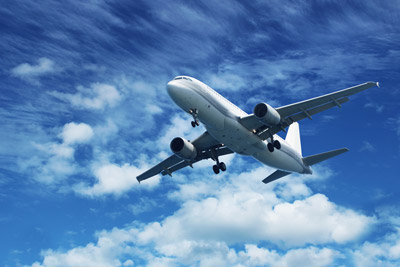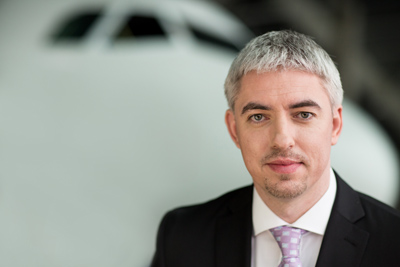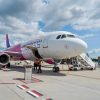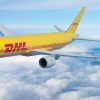 In February 2015 a French start-up airline La Compagnie announced its plans to add a second route from Europe to the USA. In contrast to both traditional low cost and legacy airlines, the carrier aims to strengthen its position in a specific niche market of low-cost all-business class transatlantic flights. While La Compagnie’s business model still has to stand the test of time, it also reflects that the post-crisis air transport industry is regaining the trust of entrepreneurs who see new opportunities in the already rather tight market. However, the limited initial capital (and creditworthiness) turns start-up airlines into a risky customer in the eyes of many financial institutions. With this in mind, a newly built or mid-life aircraft, leasing or owning – which is the best option for a “new-born” airline?
In February 2015 a French start-up airline La Compagnie announced its plans to add a second route from Europe to the USA. In contrast to both traditional low cost and legacy airlines, the carrier aims to strengthen its position in a specific niche market of low-cost all-business class transatlantic flights. While La Compagnie’s business model still has to stand the test of time, it also reflects that the post-crisis air transport industry is regaining the trust of entrepreneurs who see new opportunities in the already rather tight market. However, the limited initial capital (and creditworthiness) turns start-up airlines into a risky customer in the eyes of many financial institutions. With this in mind, a newly built or mid-life aircraft, leasing or owning – which is the best option for a “new-born” airline?
Over the past five years approx. a hundred of new start-up carriers have been emerging annually worldwide. According to AeroTransport Data Bank, in 2013 alone over 130 new airlines were announced to launch flights. Though the same year approx. 55 carriers in various world regions ceased their operations, still the figures clearly indicate that the industry is steadily gaining back its self-confidence.
“There is no universal reason why the number of new market entrants is on the rise apart from the general growth of the global economy and the appetite for the projected demand which is to top 4 billion passengers by the end of the decade,” shares Tadas Goberis, the CEO of AviaAM Leasing. “Some legacy carriers have decided to enter the low cost segment or a new region, while some businesses have taken the risk of re-launching the brands which ceased operation during the crisis or to explore a specific niche market. In either case, the majority of new entrants mostly tend to focus on regional destinations thus supporting the demand for regional or narrow body aircraft.”
Today’s jet fuel prices are in their five-year lowest and thus are certainly in favour of start-ups. The opportunity to lower fuel expenses (which account for approx. 30% of all costs) is essential for new players in their quest for building brand awareness and biting off their portion of passengers from the established market players.
Lower fuel prices have also triggered a short-term increase in the demand (and thus supply) of “older” aircraft by slightly shifting their edge of retirement or re-introducing already parked ones. Considering that an average market price for a Boeing 737 classic is around USD2-3 million, this might be a cheap temporary option for some new carriers seeking to start their operations fast. However, a smarter strategic decision would be to invest into more effective aircraft types which, despite higher initial price, in a long-term perspective cost way less to operate and maintain, for example, a first-line Boeing 737NG or an Airbus A320 with an approx. USD15 million price tag.
“From an operational point of view, a newly build aircraft would allow a start-up to save on its maintenance as even during the post-warranty period it naturally requires less MRO  servicing. But it will cost a carrier three times as much as a first-line aircraft would. Left alone the delivery slots availability. Though manufacturers’ production lines are on their record high, still it may take up to 3 years for an order to be executed,” comments Tadas Goberis. “Meanwhile, leasing companies receive new aircraft each year meaning that they can either resell or, most likely, lease the aircraft. But the price will still be too high for many start-ups. The same goes for other “young” aircraft (up to 5 years old) as the demand for them is particularly high from both new and established carriers.”
servicing. But it will cost a carrier three times as much as a first-line aircraft would. Left alone the delivery slots availability. Though manufacturers’ production lines are on their record high, still it may take up to 3 years for an order to be executed,” comments Tadas Goberis. “Meanwhile, leasing companies receive new aircraft each year meaning that they can either resell or, most likely, lease the aircraft. But the price will still be too high for many start-ups. The same goes for other “young” aircraft (up to 5 years old) as the demand for them is particularly high from both new and established carriers.”
In the meantime, the supply in the secondary aircraft market is on the rise. Today the average fleet age of an Asian Pacific top carriers is slightly above 6.3 years (36% younger than the fleet of their rivals in Europe), and the airlines intend to keep the fleet young with new deliveries. In fact, the region corresponds to the world’s largest aircraft backlog (over 3 500, according to CAPA). With the deliveries of new aircraft, Asian carriers (once the main operators of used aircraft) are eager to get rid of the 10+ years old first-line airplanes. Therefore, it is safe to forecast the secondary market will receive an extra injection of mid-life assets thus potentially pushing the prices down.
“Asia is a specific market where one may find it a real challenge to sell a 10 years’ old aircraft. The trend is also supported by the local authorities who keep the age bar for imported aircraft at 12 years or so. But start-ups in the Old World, or Latin America and Africa – they don’t mind first-line planes as long as they are leased or sold for a reasonable price. But there is a catch,” comments Tadas Goberis, the CEO of AviaAM Leasing. ”The actual number of aircraft available in the secondary market is way larger than the one publicly advertised. Moreover, many potential sellers don’t even consider selling their aircraft until you come at a right place and time and offer a deal. But then there is another issue – if one’s brand or top management doesn’t have a name in a specific region, the carrier will most likely end up with options in the on-market only. In other words, whether a start-up considers buying or leasing an aircraft, it still needs the support of established market players which will be able to locate off-market options, structure the deal as well as its financing and eventually allow new market entrants to save several millions of dollars on fleet formation.”





